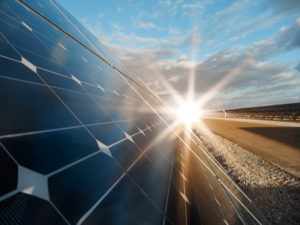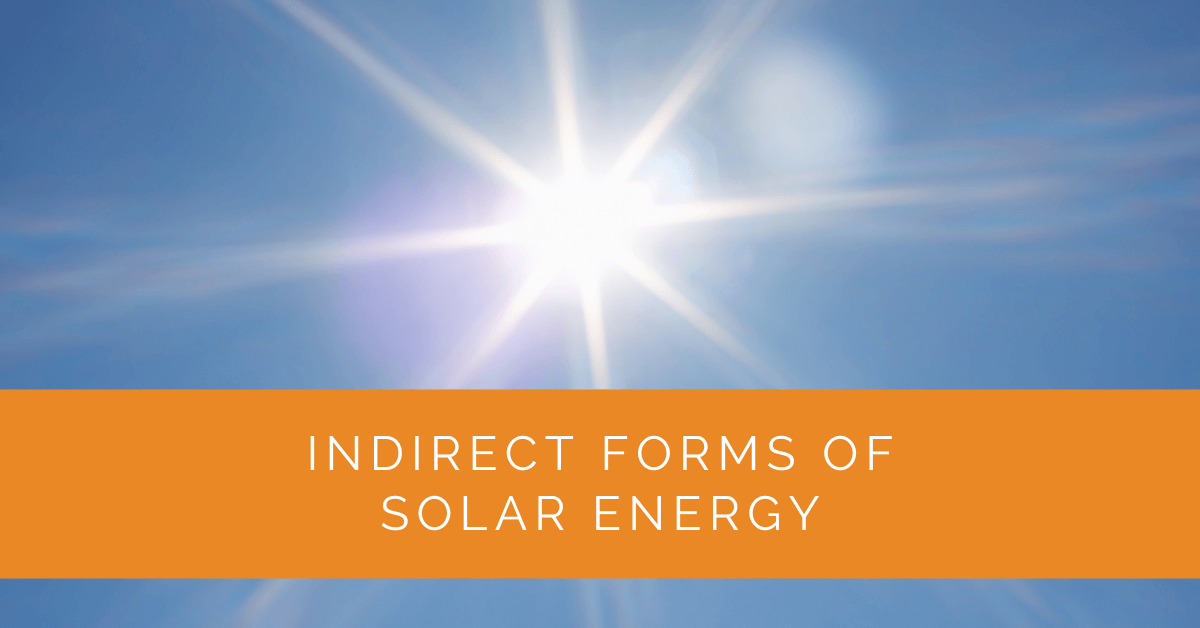Solar energy has emerged as a prominent renewable energy source, but it’s not limited to direct sunlight conversion. This article will explore the concept of indirect forms of solar energy, their significance, and how they contribute to a sustainable future.
Contents
Key Takeaways
- Indirect forms of solar energy, such as wind and biomass, provide alternative pathways for harnessing solar radiation to generate power.
- Hydro energy, including hydropower and tidal energy, is another significant indirect form of solar energy, utilizing the gravitational force of water bodies.
- Understanding and utilizing both direct and indirect forms of solar energy is crucial for promoting renewable energy sources and reducing reliance on fossil fuels.
Direct vs. Indirect Solar Energy
Solar energy can be categorized into two main forms: direct solar energy and indirect solar energy. Understanding the differences and applications of these forms is essential for harnessing the full potential of solar power generation.
Direct Solar Energy
Direct solar energy refers to the direct conversion of sunlight into usable forms of energy. This is achieved through the use of photovoltaic cells, commonly known as solar panels. Photovoltaic cells contain semiconductor materials that absorb photons from sunlight and generate an electric current. This direct conversion of solar radiation into electrical energy makes direct solar energy the most recognizable and widely used form of solar power.
Indirect Forms of Solar Energy
While direct solar energy conversion is prevalent, other indirect forms of solar energy offer alternative methods to harness the sun’s power. These indirect forms utilize natural processes influenced by solar radiation, leading to usable energy generation through intermediate steps and conversions.
The Mechanisms of Indirect Solar Energy
Indirect solar energy conversion relies on specific mechanisms that facilitate energy extraction from sources indirectly influenced by solar radiation. Let’s explore some of these mechanisms in detail:
Biomass Energy
Biomass energy is an indirect form of solar energy that harnesses the energy stored in organic matter. Through the process of photosynthesis, plants capture solar radiation and convert it into chemical energy stored in the form of biomass. Biomass can be utilized in various ways, such as burning it to produce heat, generating biofuels like ethanol or biodiesel, or even converting it into biogas through anaerobic digestion. We can effectively tap into the indirect solar energy stored in plant matter by utilizing biomass as an energy source.
Hydro Energy
Hydro energy, or hydropower, is another significant indirect form of solar energy conversion. Solar radiation drives the water cycle, causing evaporation, condensation, and precipitation. When rainwater flows through rivers and streams, it possesses potential and kinetic energy. Hydropower plants harness this energy by channeling water flow through turbines, converting it into mechanical and electrical energy. The gravitational force acting on the water due to its elevation is vital in generating hydropower. Tidal energy, a subset of hydro energy, utilizes the gravitational forces of the moon and the sun on Earth’s tides to produce power.
Wind Energy
Wind energy is a prime example of indirect solar energy conversion. Solar radiation heats the Earth’s surface unevenly, causing air temperature variations and pressure differences. This results in air movements, creating wind. Wind turbines capture the wind’s kinetic energy and convert it into mechanical energy, which is then transformed into electrical energy through generators. We can tap into the indirect solar energy resulting from atmospheric conditions influenced by solar radiation by utilizing wind energy.
Geothermal Energy
Geothermal energy utilizes the heat stored within the Earth’s crust, which originates from the sun. The Earth’s core remains heated due to the residual heat from its formation and the radioactive decay of elements. This geothermal heat can be harnessed by drilling wells and extracting hot water or steam, which drives turbines to generate electricity. Geothermal energy is a continuous and renewable source of power that indirectly derives its energy from the sun.

Total Solar Radiation and the Rotation of the Earth
The rotation of our planet influences the distribution of solar radiation on Earth. As the Earth rotates, different regions receive varying amounts of sunlight at different times. This rotation affects the availability and intensity of indirect solar energy sources such as wind and hydro. The geographic location, latitude, and time of year play significant roles in determining the amount of solar radiation received, thus impacting the potential for indirect solar energy conversion. Understanding the relationship between total solar radiation and the rotation of the Earth is crucial for optimizing the utilization of indirect solar energy.
The total solar radiation received on Earth is influenced by several factors, including the Earth’s tilt, the angle at which sunlight reaches the Earth’s surface, and daylight hours. These factors vary throughout the year and at different latitudes, resulting in variations in solar energy availability. Regions closer to the equator receive more direct sunlight throughout the year, experiencing higher solar radiation levels. In contrast, regions closer to the poles receive less direct sunlight and lower solar radiation levels due to the oblique angle at which sunlight reaches the surface.
Understanding these variations in total solar radiation helps design and implement solar energy systems, especially those utilizing indirect solar energy sources. It enables the selection of suitable locations for wind farms, hydroelectric power plants, and other renewable energy installations. By considering the geographical and temporal aspects of solar radiation, we can maximize the efficiency and output of indirect solar energy systems.
Additionally, the rotation of the Earth influences daily and seasonal patterns of sunlight. As the Earth rotates on its axis, different regions experience periods of daylight and darkness. This rotation affects the availability and duration of indirect solar energy sources such as wind and hydro energy. Wind patterns are influenced by the heating and cooling of different regions as they are exposed to sunlight, resulting in wind speeds and direction variations. Similarly, the rotation of the Earth affects the tides, as the gravitational forces of the moon and the sun interact with the Earth’s rotation, creating tidal movements that can be harnessed for energy generation.
Expert Insights From Our Solar Panel Installers About Indirect Forms of Solar Energy
Understanding indirect forms of solar energy, such as wind and biomass, helps diversify our renewable energy portfolio. This diversity is key to achieving energy independence and sustainability.
Senior Solar Installer
Indirect solar energy sources like hydropower are crucial for regions with less direct sunlight. They provide a consistent and reliable energy supply, leveraging natural processes driven by solar radiation.
Lead Solar Engineer
Integrating indirect forms of solar energy, such as geothermal and wind, with direct solar power systems can significantly enhance the overall efficiency and reliability of renewable energy solutions.
Architectural Solar Specialist
Experience Solar Excellence with Us!
Trust in Solar Panels Network USA, where our seasoned experts deliver top-quality solar solutions for homes and businesses nationwide. With a legacy of countless successful installations and a commitment to sustainable energy, we’re your reliable partner in the solar journey. Ready for a brighter, eco-friendly future? Call us now at (855) 427-0058 and harness the power of the sun!
Conclusion
Understanding indirect forms of solar energy expands our perspective on renewable energy sources. Wind, biomass, and hydro energy are indirect sources that harness solar radiation through various conversions. By tapping into these indirect forms of solar energy, we can reduce dependence on fossil fuels and promote a sustainable future. As we explore the potential of direct and indirect solar energy conversion, technologies like wind turbines, hydroelectric power plants, and photovoltaic cells continue transforming sunlight into clean and usable energy.
About the Author
Solar Panels Network USA stands at the forefront of solar energy solutions, driven by a team of seasoned solar engineers and energy consultants. With over decades of experience in delivering high-quality solar installations and maintenance, we are committed to promoting sustainable energy through customer-centric, tailored solutions. Our articles reflect this commitment, crafted collaboratively by experts to provide accurate, up-to-date insights into solar technology, ensuring our readers are well-informed and empowered in their solar energy decisions.

